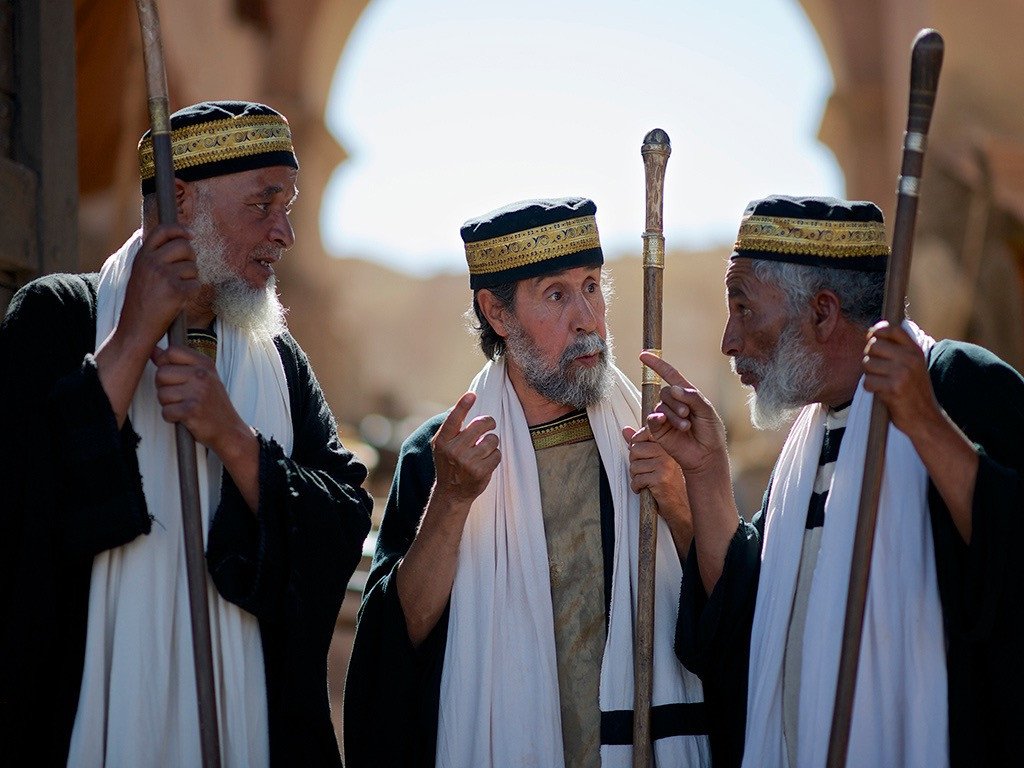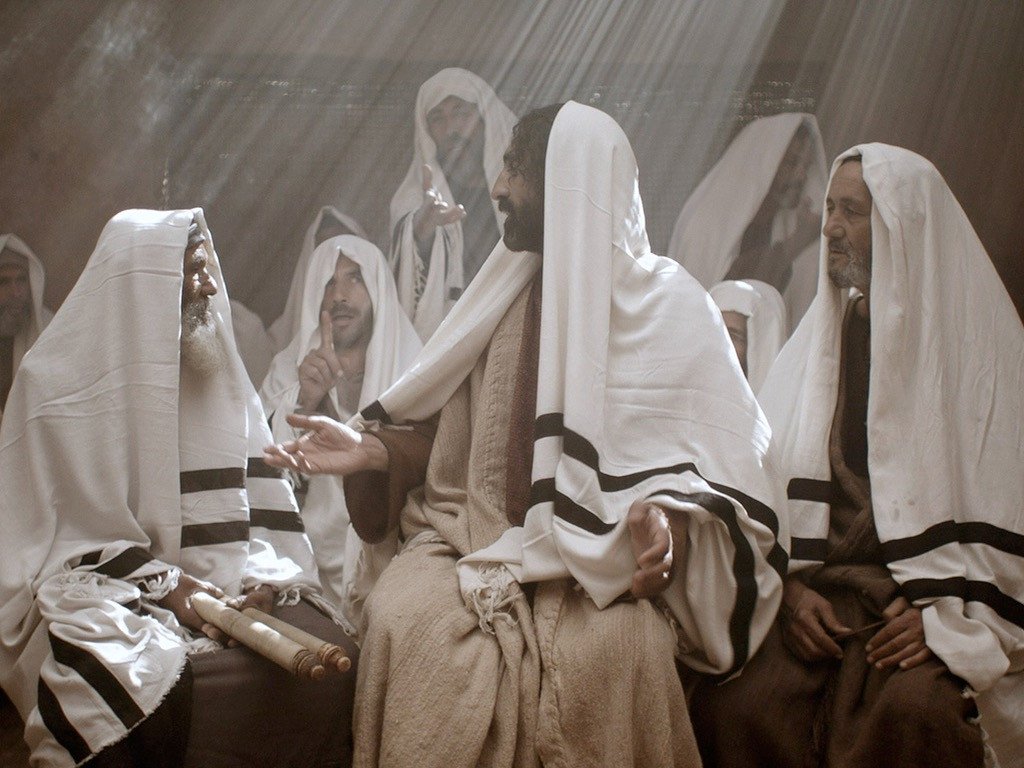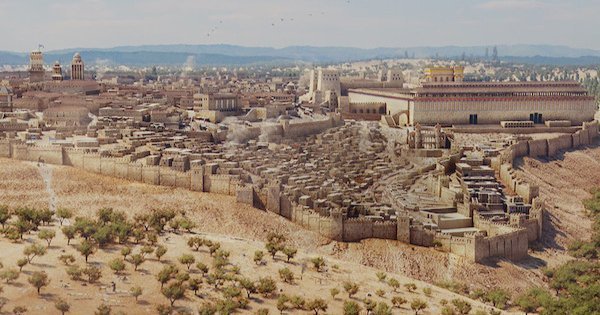Who Were Jesus’ Opponents in the Bible?
Jo Acharya | January 27, 2024
This is part 2 of a short series on the Historical Context of the Gospels. If you haven’t read part 1 yet, click here to find out more about the Romans, the Samaritans and the many King Herods.
During Jesus’ life on earth he interacted with several different Jewish groups. Often we tend to lump them in together as antagonists, but they had quite different motivations. In part 2 of this series on the historical context of the Gospels, we’ll meet each of these groups and find out who they were – and why they all had such a problem with Jesus.
I’m grateful to the BEMA podcast for helping me understand this better; their episodes on the ‘Silent Years’ at the beginning of season 3 are excellent and I highly recommend them. The rest of this is filled out with my own research, but I’m not an expert so please let me know if you spot any errors.
If you’re interested in a particular section, click on it to jump straight there:
Jewish religion at the time of Jesus
Who were the Pharisees?
How did the Pharisees and Sadducees differ?
What did the Sanhedrin do?
Who were the teachers of the law?
Zealots, Essenes and Herodians
Jewish religion at the time of Jesus
During their exile in Babylon, the Jews had reflected on how they had ended up losing their land and their freedom. The books of Kings were probably written during this time, to explain how Israel and Judah’s sin had led to this judgment from God.
Many Jews came out of exile with a renewed passion for their faith and a determination to live God’s way and earn his favour. By the time of Jesus’ ministry, they had begun meeting in assemblies called synagogues. The newly rebuilt Temple in Jerusalem was still the central focus of Jewish worship, but in between the annual feasts Jews met in these local synagogues each Sabbath (Saturday) to pray and hear teaching from Scripture. Any Jewish man could contribute to the service, and visiting teachers might be asked to give a sermon. Jesus spoke regularly in synagogues during his ministry (Luke 4:14-27).
Connected with the synagogues were synagogue schools where young boys learned the Scriptures by memory. (It’s possible that girls also may have learned the basics.) The most promising students might eventually apply to a local Rabbi (teacher) for further mentoring as a disciple. Yes – Jesus was not the only Jewish teacher who had disciples! He did however choose his disciples in a very unusual way, picking not the most theologically gifted, but ordinary young men and even a tax collector. (There’s more on this in one of my favourite lessons from BEMA)
Who were the Pharisees?
The Pharisees were a devout group who emerged around 160BC. Their name was probably based on a Hebrew word meaning ‘separated’, which gives an idea of how they saw themselves. The Pharisees were very focused on keeping the whole Law of God throughout the Scriptures, as well as the oral teachings and traditions that had been passed down through the generations. They devoted much time and energy to interpreting the Law, for example, judging what activities should be defined as work and thus be forbidden on the Sabbath. This resulted in many extra rules that expanded upon those in the Scriptures themselves.
Of all the Jewish groups, Jesus was probably closest to the Pharisees – in fact some suggest he may actually have been a Pharisee himself! In the Gospels, some individual Pharisees, such as Nicodemus and Joseph of Arimathea, are presented as sympathetic to Jesus. However Jesus had strong criticism for the way in which many Pharisees obsessed over small details or man-made rules, at the expense of treating people well. He accused them of placing burdensome demands on people while enjoying their own high status and not seeing their own need for repentance. Jesus’ critique of the Pharisees is summed up well in Luke 11:39-43 and Matthew 23:1-7.
The greatest commandment
An important question for the Pharisees was about how a person should decide what to do when two laws seemed to be in conflict. For example, in Joshua 2:1-3, Rahab had to choose between betraying the Israelite spies and telling an outright lie. In order to decide cases like this, a rabbi had to place the commandments in order of priority. All rabbis agreed that the most important commandment was to love God, but the order of the rest was up for debate. Whichever of the remaining commandments a rabbi considered the ‘greatest’ would essentially be their guiding principle, by which they interpreted the rest of the Law.
At the time of Jesus, there were two prominent schools of thought on this among the Pharisees, influenced by two rabbis called Shammai and Hillel. Shammai elevated the command to keep the Sabbath: his guiding principle was obedience, and he interpreted the Law through that lens. Hillel on the other hand prioritised the command to love one’s neighbour, and he took love for others as his guiding principle. As a result, Shammai’s teachings were generally seen as more strict, and Hillel’s as more liberal.
When Jesus was asked in Matthew 2:36-40 what he believed to be the greatest commandment, he was basically being asked whether he agreed with Shammai or Hillel. Jesus’ answer puts him on Hillel’s side (though it’s worth noting that he didn’t always agree with Hillel – on divorce he sided with Shammai).
How did the Pharisees and Sadducees differ?
The Sadducees were a religious party among the Jewish elite, based in Jerusalem. They were wealthy and powerful and most were priests. They were probably named after the High Priest Zadok in the Old Testament. The Sadducees controlled the Temple (rebuilt by Herod the Great) and the High Priest was chosen from among their members.
The Sadducees had different beliefs from the Pharisees on some key issues. Firstly, they only held sacred the first five books of Scripture (Genesis to Deuteronomy, also called the Torah). In determining law, they only consulted these five books, not the rest of the Old Testament or the oral traditions that were so important to the Pharisees.
The Sadducees believed in a distant God who did not intervene in the world; whereas the Pharisees saw God as much more closely involved with humans. As we see in the Gospels, the two groups also disagreed on what happened after death; the Pharisees believed in an afterlife, but the Sadducees did not. That’s why some Sadducees asked Jesus about marriage in the afterlife in Matthew 22:23-32.
The Sadducees benefited greatly from Roman rule. The Romans allowed them to stay in charge of the Temple and effectively protected their high status. The Sadducees therefore had a vested interest in maintaining the status quo. Some considered the Sadducees corrupt; Jesus certainly disapproved of the way the Temple was being misused for financial gain, turning out the merchants and moneychangers in Mark 11:15-18.
What did the Sanhedrin do?
The Romans largely let Jewish society govern itself, within the bounds of Roman law. The Jewish government was called the Sanhedrin and was made up mainly of Sadducees, with some Pharisees.
It was the Sanhedrin who presided over Jesus’ trial. The Sadducees came up with the plot to kill him, and the soldiers sent to arrest him were the Temple guards, at the command of Caiaphas, the Chief Priest. They saw how the ordinary people revered Jesus and saw him as a threat to their power. Jesus’ trial during the night was conducted at Caiaphas’ house and the Sanhedrin declared him guilty of blasphemy before sending him on to the Roman Governor, Pontius Pilate.
Who were the teachers of the law?
The other group mentioned frequently in the Gospels were teachers of the law, also called scribes. This was the professional title for those who studied the Law transcribed (copied) books of Scripture and drew up legal documents. They could assist for example with marriage and business contracts, and provided expert opinion on legal questions. In this Jewish culture, God’s written Law underpinned all cultural rules and customs, so these men were both trained lawyers and religious experts.
Some scribes may also have been Pharisees or Sadducees, and many seem to have had similar hostility towards Jesus. Jesus often included the scribes in his critique of Pharisees.
Zealots, Essenes and Herodians
There were a few other Jewish groups active at the time of Jesus. The Zealots wanted to overthrow the Romans by force and instigated rebellions and uprisings. Jesus’ disciple Simon the Zealot (Luke 6:15) was presumably part of this movement before he was called to follow Jesus. The Zealots themselves do not feature in the Gospels and are not seen as opponents of Jesus.
A group called the Essenes separated themselves from the rest of the Jewish community and were very focused on ritual purity. The Dead Sea Scrolls, discovered in 1946, are widely believed to have belonged to the Essenes. Some people think John the Baptist may have been an Essene. Like the Zealots, the Essenes are not explicitly mentioned in the Gospels or seen as critical of Jesus.
The Herodians are mentioned a few times in the Gospels as antagonists, and are presumed to have been a group supportive of Herod Antipas. They may have been his employees or possibly a Jewish political party aligned with him.
Opponents of Jesus
Jesus’ words and actions were radical and threatening to many different Jewish groups. To those longing for a military leader who would defeat the Romans, Jesus’ focus on a spiritual kingdom was disappointing. To the self-righteous, his kindness towards ‘sinners’ and criticism of their own hypocrisy was offensive. And to those who wanted to hang onto their own power, wealth and status, his condemnation of injustice and corruption was deeply dangerous. Some religious leaders did respond positively to his message, but it was often the sinners and outcasts instead who recognised their need for forgiveness and found hope in Jesus’ revelation of a merciful God who loved and accepted them as his children.
Join our community
Sign up for bonus content, special offers and free gifts!





